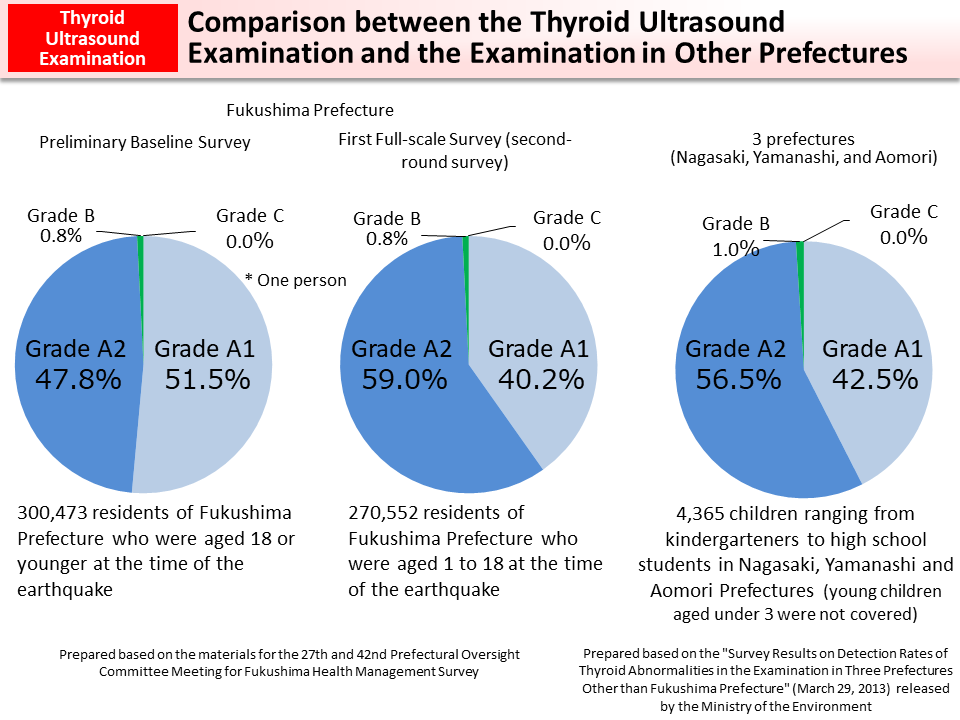Comparison between the Thyroid Ultrasound Examination and the Examination in Other Prefectures
When the Thyroid Ultrasound Examination commenced, many concerns were raised about a relatively high percentage of examinees diagnosed as Grade A2. Therefore, in FY2012, the Ministry of the Environment (MOE) conducted the thyroid examination targeting approx. 4,300 children in Nagasaki, Yamanashi and Aomori Prefectures (3-prefecture examination) in the same manner as the examination conducted in Fukushima Prefecture.
The Preliminary Baseline Survey in Fukushima Prefecture covered those aged zero to 18 at the time of the earthquake, and the first Full-scale Survey covered those aged two to 23 at the time of the examination, respectively, while the 3-prefecture examination excluded children aged under 3 and covered only those aged 3 to 18. As the sample size of the cohort was much smaller in the 3-prefecture examination, a simple comparison cannot be made, but the results show that those diagnosed as Grade A2 were not exceedingly greater in number among the children of Fukushima Prefecture. The results of the 3-prefecture examination after age adjustment based on the demographics of Japan as of 2010 show that the detection rate of cysts was reported as 52.35% and that of nodules as 1.54%,1 which were similar to the results of the Preliminary Baseline Survey and the first Full-scale Survey in Fukushima Prefecture. The report of the 3-prefecture examination also made the following observations: “It is generally known that the detection rate of nodular lesions is lower in the group of examinees aged 3 to 5 than in the group of examinees aged 6 or older, and that females show higher detection rate than males. Therefore, there is the possibility that a detection rate tabulated based on simple descriptive statistical methods as in this case may be higher than the actual rate.”2 In fact, the percentage of those diagnosed as Grade A2 in the first Full-scale Survey (second-round survey) excluding examinees aged 2 or younger was extremely close to the results of the 3-prefecture examination.
- Hayashida N, et al. Thyroid Ultrasound Findings in Children from Three Japanese Prefectures: Aomori, Yamanashi and Nagasaki. PLoS One. 8(12): e83220, 2013.
- “Report on the Outcome of the FY2012 Survey on Detection Rates of Thyroid Abnormalities” (commissioned by MOE), The Japan Association of Breast and Thyroid Sonology (March 2013)
- Included in this reference material on March 31, 2014
- Updated on March 31, 2022

